This week started off with a slow start. I completed some office work for the first two days of the week; along with attending the staff meeting and helping Marybeth bring the used tanks to the dive shop to be refilled.
Throughout the summer, Gray’s Reef holds “Gray’s Reef Tuesdays” where a ocean related media production is shown. I was able to attend the final Tuesday showing with Marybeth.
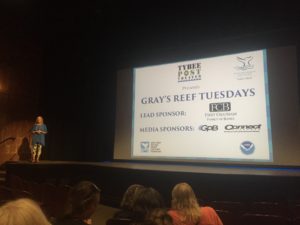
On Wednesday, I began off on a new adventure. I was headed to Atlanta on the bus to visit the Georgia Aquarium.
My friend Zach’s family was visiting Atlanta, so it worked out well that I would be able to stay with them. Thursday we spent the entire day at the aquarium. The Georgia Aquarium is one of the largest aquariums in the world. It has over 10 million gallons of water within its tanks. The aquarium is split up into different sections according to climate such as the cold water quest, tropical diver, river scout, etc. We also saw the different shows such as the the seals and sea lions that had been rescued. My favorite part of the aquarium was the touch tanks. You were able to pet the sting rays in one of the exhibits!
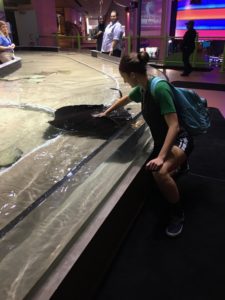
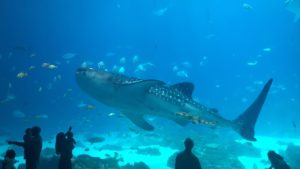
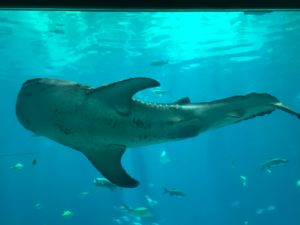
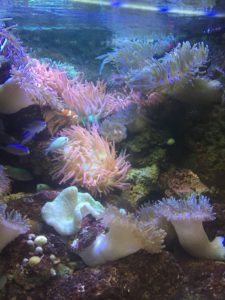
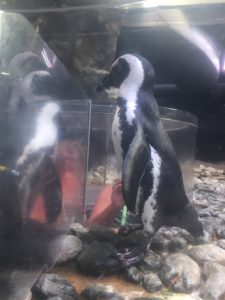
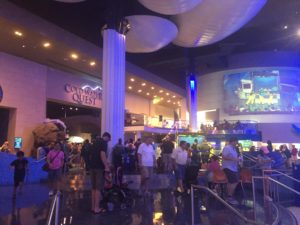
Besides the aquarium we also were able to visit the Martin Luther King, Jr. National Historic Site, which is run by the U.S. National Park Service. They have a museum of different artifacts, along with a memorial site outside.

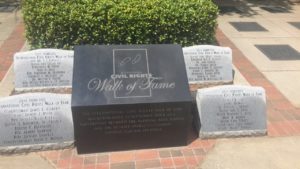
Saturday, August 12th was the day we finally got to dive the Georgia Aquarium. We woke up and arrived at the aquarium in the morning. First, we were brought back stage to the top of the aquarium tank that holds the whale sharks.
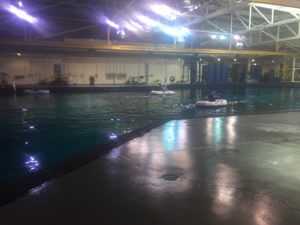
There were four divers in our group since we signed up for the Rebreather dive. We were given the chance to ask the Divemaster’s any questions that we had about the aquarium before we were brought into the classroom. This classroom session is used to explain how a Rebreather works since it is different than scuba gear. Rebreather’s recycle the oxygen, instead of being released into the water. This is a more efficient use of air, and therefore you are able to stay underwater longer. In addition, when you are using a Rebreather your buoyancy control is affected. With a Rebreather you essentially have an extra pair of lungs on your BC that you are breathing the recycled air from. Therefore, you are unable to control your buoyancy by using your lungs and breath. When using a Rebreather you also have to remember that you cannot take the mouthpiece out of your mouth because of the closed circuit. This will allow water to enter the system and it will keep recycling through when you breathe. If you need to take the mouthpiece out underwater, you just have to remember to change it to open circuit.
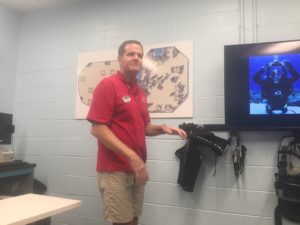
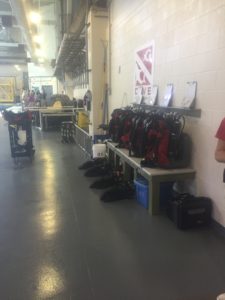
After we learned about the Rebreathers in the classroom, we were brought back out to the deck of the aquarium tank where our equipment was waiting for us. We were shown the different parts of the Rebreather on the actual system we would be using and then were shown how to complete the safety test. This is a test done by the Rebreathers computer that checks to see if all the equipment is working properly; the test has about 35 different steps. The final step is breathing off your unit for 5-minutes on dry land. This is done because if any problems were to occur, the greatest possibility is within this time frame. After this exercise was completed, we went to the locker rooms and got our wet suits on. Finally, we were ready to get in the water!
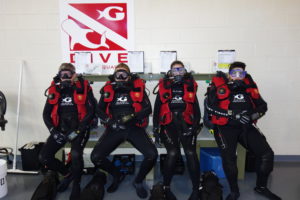
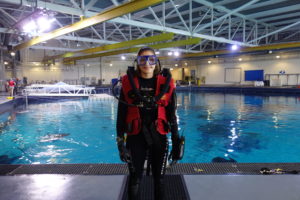
Besides buoyancy control, the biggest difference about the Rebreather is when trying to descend. You essential have to suck all the air of your secondary lungs that are attached to your BC. When you get to the last bit of air left, you have to take a deep breath to overcome the pressure difference. Once on the bottom, you adjust your BC to compensate for your buoyancy and then it does not have to be adjusted for the rest of your dive.
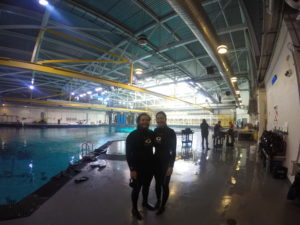
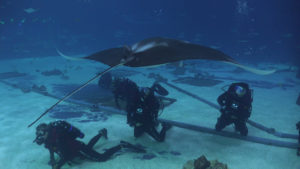
We swam around the tank surrounded by many different sharks, rays, fish, turtle, and the most popular species in the tank, the whale sharks! There are four whale sharks in the tank. When they swim over your head, it looks like a giant cloud is blocking out the light. We swam throughout the entire tank, lead by our three Divemasters. One of my favorite parts was swimming over the tunnel and in front of the large window. When we swam over the tunnel, the fish were literally hitting us in the face because there were so many of them. The rays would also swim very close to you.
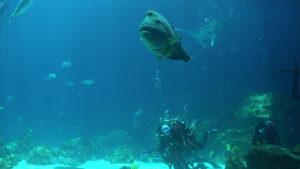
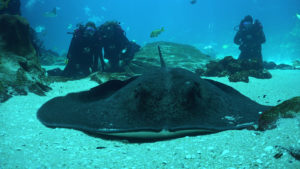
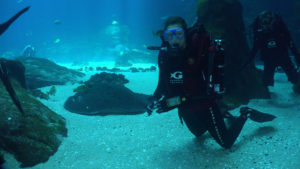
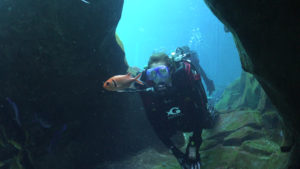
Another one of my favorite parts of the experience was waving back at and interacting with other people visiting the aquarium. This little boy in particular, maybe about two years old, became very excited that I was interacting with him. He was even blowing kisses back and jumping around extremely excited!
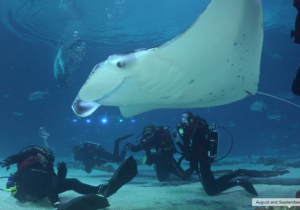
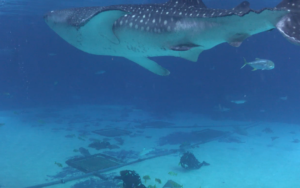
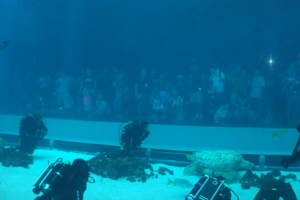
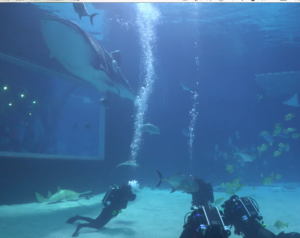
Altogether, we spent a total of 73 minutes underwater. Once our dive had ended we got out of the tank, took a shower, and changed in the locker rooms. We spent a little more time in the aquarium and then went back to the house for the night.
On Sunday, I made my way back to Savannah; it was a fairly easy bus ride and Marybeth picked me up from the bus station.
Monday, I was back to work in the office. I worked on the diving effort and sea turtle sighting excel spreadsheets. Diving effort data is collected to help explain different data results. For example, if there is an increase in sightings of lionfish one year it may be due to a higher diving effort that particular year instead of an actual increase in sightings. This is important to take into consideration when looking at data. In addition, I continued working on my GIS training and mapping.
I attended the weekly staff meeting on Tuesday as well as worked on organizing and inventorying the first aid kits. The first aid kits need to be inventoried periodically to make sure nothing has expired or has been used. Each boat (Sam Gray and Joe Ferguson) has their own first aid kit. As well, the office has their own additional first aid kit. This job ended up taking two days to complete because we had to go purchase some new items that had expired. This is a tedious task, but one that needs to be completed so we are prepared in the case of an emergency.
I continued the week with updating more safety protocol. I updated the office layout map with additional labeling for fire, first aid, and AED locations. In addition, I also created an Acoustic Telemetry Array Data sheet that we would be using on our dives the following day.
Thursday, we headed back out to Gray’s Reef. Marybeth picked me up early in the morning and we began loading tanks and our gear. We were headed out on the R/V Sam Gray. Our goal for the day was to assess and retrieve hydrophones. We completed a total of 6 dives and found each hydrophone we were looking for! The dives were not very long, especially if we had a good drop location, ranging from a total of about 12-15 minutes total time from descent to being back on the surface. Each dive consists of one person taking notes on the data sheet (my job) while the other person takes pictures of each piece of the array. These pictures are helpful resources to look back at when we are in the office. We also headed back to Gray’s Reef on Friday to continue assessing and retrieving hydrophones. We finished the remaining four dives that we had planned for the week.

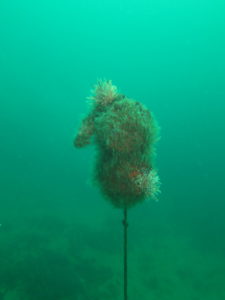
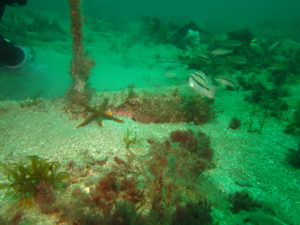
Photo by NOAA, Erika Sawicki
One of the best parts of the long ride to Gray’s Reef (approximately 2 hours), is that there is always time for a nap on the way out and back! Each day, I found myself a spot in a beanbag.
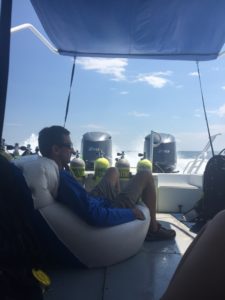
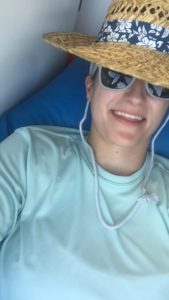
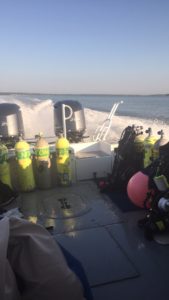
Over the weekend, I was lucky to have another friend, Taron, passing through the area. He is a fellow scuba diver who I had met while working in the Florida Keys last summer. We met up and headed down towards Brunswick, Georgia. We explored the area, visiting Saint Simon and Jekyll Island. On Saint Simon Island we explored all the different little shops. They were also having a craft fair with different handmade jewelry, signs, decorations, etc. It is a very quaint little beach town.
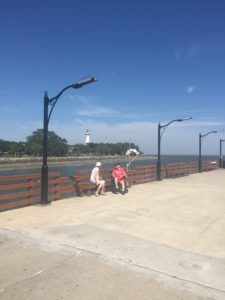
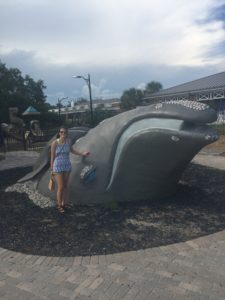
We then headed to Jekyll Island, where we visited driftwood beach. This beach has large driftwood trees that have fallen over into the ocean. It is one of those places that you cannot really picture until you have visited. It is like nothing you have ever seen!
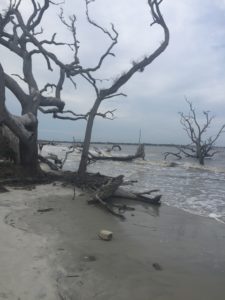
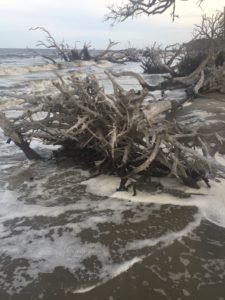
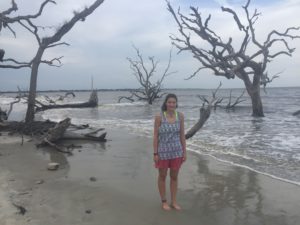
I have had a very eventful last two weeks and am excited to see what is on the horizon!

